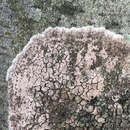en
names in breadcrumbs


The Septobasidiales are an order of rust fungi in the class Pucciniomycetes. It contains the single family Septobasidiaceae,[4] which itself comprises six genera: Aphelariopsis Jülich (with 1 species), Auriculoscypha D.A. Reid & Manim. (with 1 species), Coccidiodictyon Oberw. (with 1 species), Johncouchia S. Hughes & Cavalc. (with 1 species), Septobasidium Pat. (with about 200 species) and lastly, Uredinella Couch (with 2 species).[5]
Order Septobasidiales was circumscribed in 1964 by Marinus Anton Donk,[1] based on an earlier description by John Nathaniel Couch in 1938.[6] When
The order used to contain 3 families; Auriculoscyphaceae, Septobasidiaceae and Uredinellaceae. It was reduced to just Septobasidiaceae.[5]
They are generally parasitic on plants, while some species are parasitic on or symbiotic with scale insects (of the order Homoptera). They have basidiospores (reproductive spore) that germinate on insects, with the haustoria (rootlike structure that grows into or around another structure to absorb water or nutrients) coiled inside insect. Septobasidiales are perennial and thus exhibit distinct seasonal responses. Growth occurs during the wet season and ceases or slows at the onset of the dry or cold season.[7]
These fungi are, effectively, zoophilic rusts whose nourishment derives wholly from partial parasitism of scale insect populations underlying crust-like fungal thalli. The global knowledge of these fungi depends heavily on a classic monograph by Couch (1938). Later large scale studies of this genus include those by Azema (1975),[8] and the validation (Gómez & Henk, 2004)[9] of Couch's (1938),[6] many new but invalidly published species of Septobasidium.[10]
The Septobasidiaceae family contain 5 genera and over 180 species that are parasitic on scale insects (especially the Coccoidea). This group of fungi have been studied rarely, with the exception of the early work of Couch (1938),[6] and a small number of recent publications (e.g., Henk and Vilgalys 2007). Collections of Septobasidiaceae are scant, and living cultures are even rarer. The largest and most important genus is Septobasidium, which grows as mats of hyphae covering and embedding scale insects on branches and leaves of trees.[11]
Septobasidium is a genus that is practically worldwide in distribution and is very abundant in certain localities, and it occurs on a great variety of wild and cultivated woody plants, such as citrus, apple, tea, and rubber, sometimes causing much damage.[6]
Species in the order and the family are found worldwide,[6] they have a cosmopoltian distribution.[12] Including China.[13]
The Septobasidiales are an order of rust fungi in the class Pucciniomycetes. It contains the single family Septobasidiaceae, which itself comprises six genera: Aphelariopsis Jülich (with 1 species), Auriculoscypha D.A. Reid & Manim. (with 1 species), Coccidiodictyon Oberw. (with 1 species), Johncouchia S. Hughes & Cavalc. (with 1 species), Septobasidium Pat. (with about 200 species) and lastly, Uredinella Couch (with 2 species).
Order Septobasidiales was circumscribed in 1964 by Marinus Anton Donk, based on an earlier description by John Nathaniel Couch in 1938. When
The order used to contain 3 families; Auriculoscyphaceae, Septobasidiaceae and Uredinellaceae. It was reduced to just Septobasidiaceae.
They are generally parasitic on plants, while some species are parasitic on or symbiotic with scale insects (of the order Homoptera). They have basidiospores (reproductive spore) that germinate on insects, with the haustoria (rootlike structure that grows into or around another structure to absorb water or nutrients) coiled inside insect. Septobasidiales are perennial and thus exhibit distinct seasonal responses. Growth occurs during the wet season and ceases or slows at the onset of the dry or cold season.
These fungi are, effectively, zoophilic rusts whose nourishment derives wholly from partial parasitism of scale insect populations underlying crust-like fungal thalli. The global knowledge of these fungi depends heavily on a classic monograph by Couch (1938). Later large scale studies of this genus include those by Azema (1975), and the validation (Gómez & Henk, 2004) of Couch's (1938), many new but invalidly published species of Septobasidium.
The Septobasidiaceae family contain 5 genera and over 180 species that are parasitic on scale insects (especially the Coccoidea). This group of fungi have been studied rarely, with the exception of the early work of Couch (1938), and a small number of recent publications (e.g., Henk and Vilgalys 2007). Collections of Septobasidiaceae are scant, and living cultures are even rarer. The largest and most important genus is Septobasidium, which grows as mats of hyphae covering and embedding scale insects on branches and leaves of trees.
Septobasidium is a genus that is practically worldwide in distribution and is very abundant in certain localities, and it occurs on a great variety of wild and cultivated woody plants, such as citrus, apple, tea, and rubber, sometimes causing much damage.